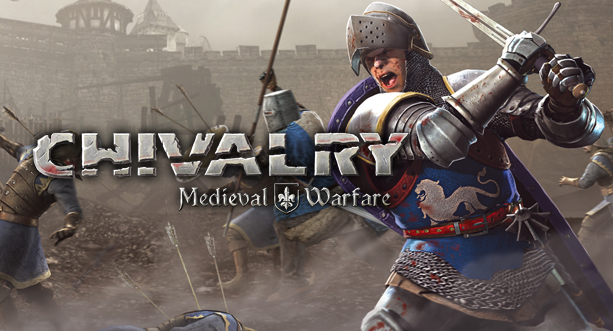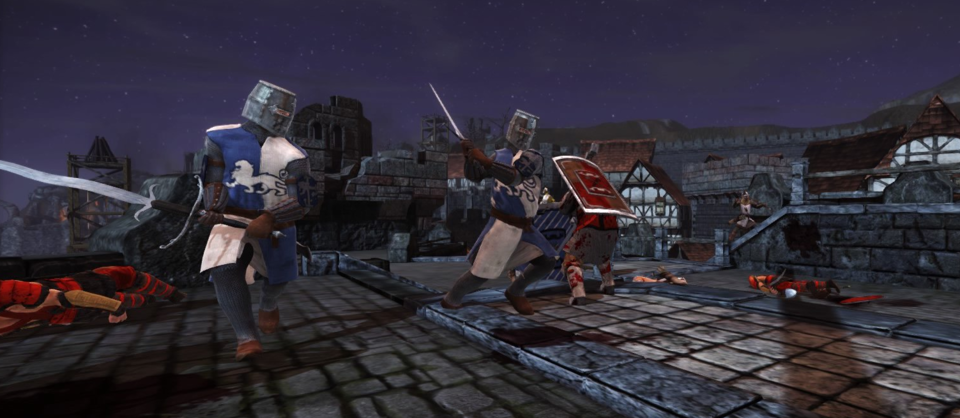The Hilarious Chaos of Chivalry: Medieval Warfare
By DragonMall 0 Comments

Chivalry: Medieval Warfare
Developer: Torn Banner Studios
Publisher: Torn Banner Studios, Activision
Platforms: Windows, OS X, Linux, PlayStation 3,
PlayStation 4 (The version I played)
Xbox 360, Xbox One
There is a feeling of chaos that permeates an online match ofChivalry: Medieval Warfare. Players recklessly swing their weapons while potentially decapitating a teammate's head in the process. The ability to vote players out of a match is abused constantly and the game's frame rate is far from perfect. However, these aspects inexplicably make Chivalry one of the funniest experiences I've had in an online multiplayer game.
Players choose between the blue-and-gold Agatha Knights and the red-and-black Mason Order and choose from one of four classes before spawning into battle. The Man-at-Arms is light, agile, and can use his speed to dodge attacks. The Vanguard's ridiculously long weapons give him a significant reach advantage. Despite his fragility, the Archer focuses on ranged weapons to deal damage from a distance. The last class is the powerful and heavily armored, but slow-moving Knight. Chivalry's melee combat consists of various moves that can be performed from a first-person or third-person perspective. You can block and parry, shove back your enemies, and perform three different types of attacks that can be used in feints and combos: stab, overhead, and slash. Due to the game's focus on melee combat, fighting is done at close quarters. The max amount of players allowed in a match is 24, 12 on both teams. With that many players wildly swinging at each other, the combat becomes fast-paced and hectic. One-on-one duels are interrupted by nearby players eager to join the fray. Archers taken by surprise equip their daggers out of desperation and stab relentlessly. Dismemberment, battle cries, and death rattles accentuate Chivalry's gory combat.

The game has a friendly fire mechanic that allows you to damage and kill your own teammates. Doing so rightfully penalizes you with more seconds added to your respawn timer. However, due to the close quarters combat, team killing is prevalent and usually accidental. As a Man-at-Arms I once chucked an oil pot at a group of enemies and accidentally burned a few of my teammates. Sometimes I killed a teammate or two as I swung my sword at an enemy. I once saw someone launch a boulder from a catapult that wiped out several of his teammates without killing anyone on the opposing team. My worst team kill happened during a match of team objective, a game type in which one team attacks and the other defends. As the Agatha Knights, my team and I had to defend and escort a fellow teammate playing as a king. As we defended him from a group of Mason Order players, I got too close and accidentally killed him. Although I caused my team to lose the match, I couldn't help but laugh at my mistake. Of course, team killing isn't funny when it's done purposely. In one frustrating experience, I was constantly killed by a teammate who was very good at the game. I know this because he was able to parry all of my attacks when I tried to retaliate. Eventually, I was able to kick him out of the match using the game's vote kick mechanic. When a vote is initiated, a box appears on the left side of the screen that contains the name of the targeted player along with the percentile of team damage they accumulated. If enough players vote yes, the targeted player is removed from the match. Since any player can be targeted regardless of the amount of team damage they inflicted, the vote kick mechanic is often used to harass other players. In one match, I noticed that players on both teams were kicked out one after another as if the match were being fought with the vote kick mechanic instead of the melee combat. It's not rare to see a player accumulate 100% team damage or be kicked out simply because they had the highest score on their team.
An inconsistent frame rate really highlights the chaos ofChivalry. The PlayStation 4 port supposedly runs at 60FPS (frames per second), but I noticed that the frame rate suffers when players are in close proximity to each other. For instance, several Agathians and I were defending one of two small buildings on the game's Coldfront map. A group of Mason Order players barged in and the fight began to stutter. Everyone ran wild and swung for the fences without showing any concern for their nearby teammates. I was bloodied and exhausted. A dark reddish hue on the edges of my screen and the sound of a heartbeat indicated that I was severely low on health. My depleted stamina meter caused the frequency of my attacks to cease. I frantically attempted to keep track of what was happening, but everyone was too frenetic and relentless. Against the backdrop of an incomprehensible fight, I laughed at the madness that was happening on-screen.
The chaos that occurs in Chivalry is why I have spent dozens of hours playing the game. Moreover, my experience online was filled with moments of comedy. Seeing myself or another player get wiped out by the impact of an unforeseen boulder feels like something you would see in a cartoon. Likewise, the character model of a defeated player will sometimes glitch, causing it to shake on the ground and act as a background gag amidst the fighting. I never get tired of the battle cries that are constantly shouted or the death rattles that are humorously a bit too long. I was never bothered by team killing and vote kicking. In fact, they happen so often that it became absurdly funny. Chivalry's slapstick swordplay and player-driven chaos gave me so many laughs that I didn't mind waiting nearly twenty seconds to respawn after I accidentally injured my teammates.



Log in to comment